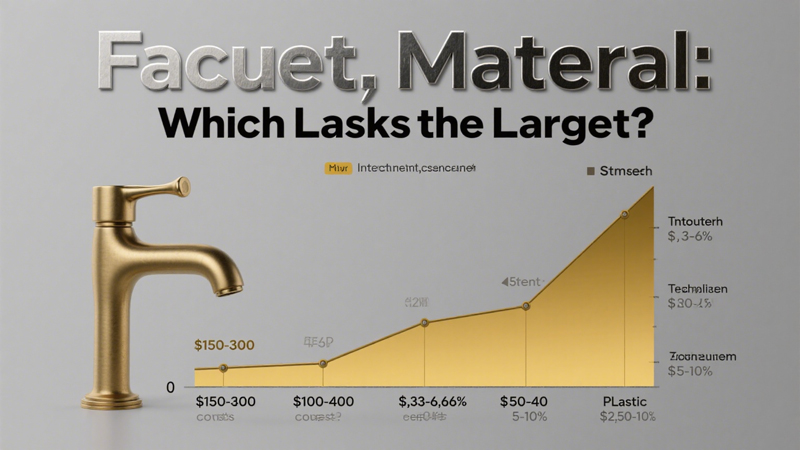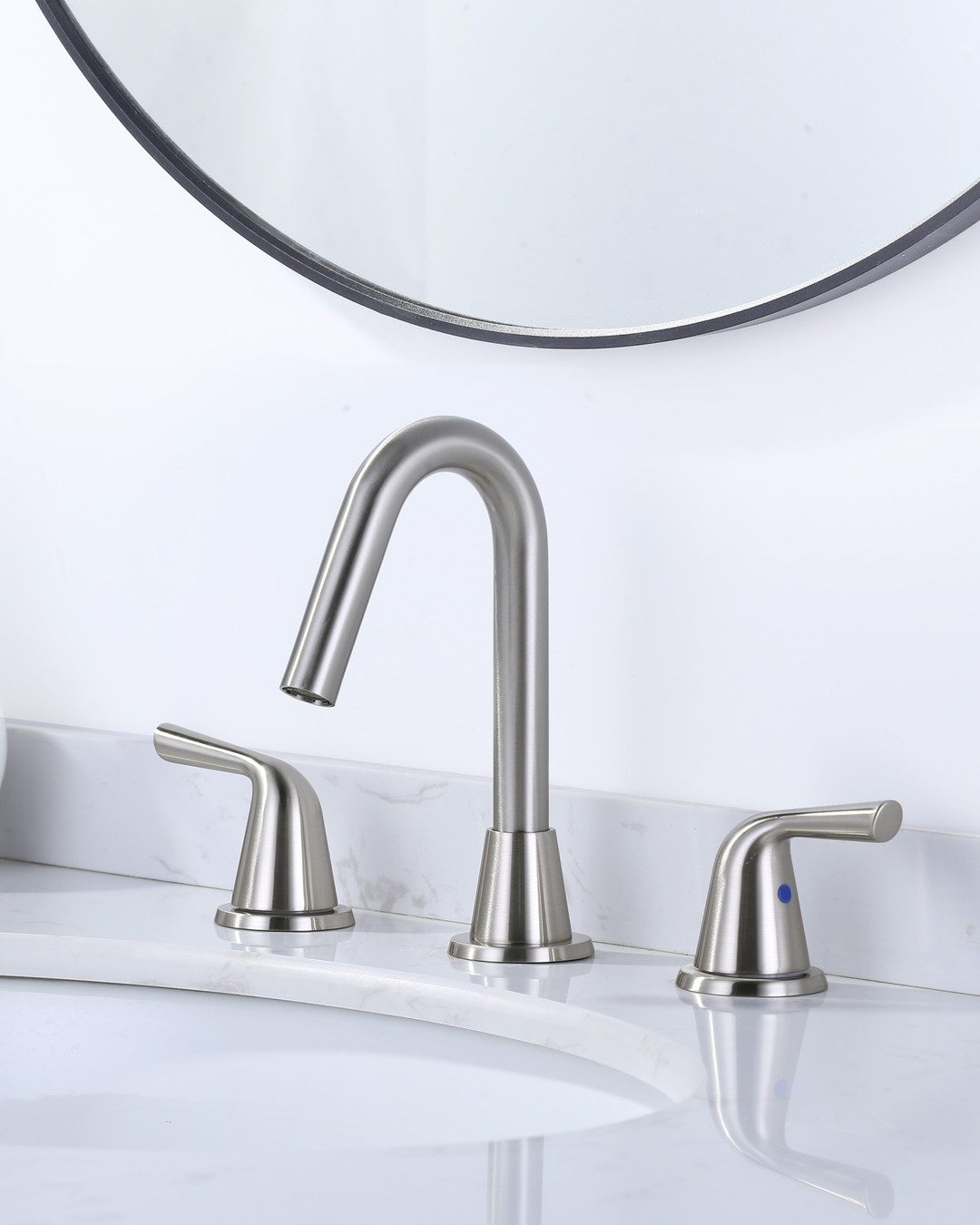Faucet Materials: Which Lasts the Longest?
View Count:75 CategoryBlog
When you buy a faucet, you’re not just buying something that delivers water — you’re investing in a fixture you’ll use dozens of times a day, every day. It’s one of the most touched items in a kitchen or bathroom, and the material it’s made from will determine how well it stands up to years of use, splashes, cleaning, and the occasional overzealous child “helping” with the dishes.
The question many homeowners ask is simple: Which faucet material lasts the longest?
The answer depends on durability, corrosion resistance, maintenance needs, and even water quality in your area. Let’s break down the most common faucet materials, their pros and cons, and which ones you can count on for decades of service.
1. Solid Brass Faucets
Why They’re Popular:
Solid brass has been the gold standard for faucet construction for decades. It’s naturally corrosion-resistant, handles hard water better than most materials, and has a reassuring weight that makes it feel premium.
Pros:
Extremely durable — can last decades with proper care.
Resists corrosion and mineral buildup.
Works well in homes with hard water.
Can be finished in a variety of styles (chrome, brushed nickel, bronze, etc.).
Cons:
Heavier than other materials, which may require sturdier installation.
More expensive than zinc or plastic faucets.
Still needs regular cleaning to prevent spotting.
Lifespan:
With proper maintenance, solid brass faucets can last 15–25 years or more. Some high-end models have been known to last 50 years before needing replacement parts.
2. Stainless Steel Faucets
Why They’re Popular:
Stainless steel has a modern, clean look and offers excellent corrosion resistance. It’s especially popular in commercial kitchens, where hygiene and durability are top priorities.
Pros:
Highly resistant to rust and corrosion.
Easy to clean and sanitize.
Non-porous surface won’t harbor bacteria.
Sleek, modern appearance.
Cons:
True solid stainless steel faucets are expensive; some “stainless” models are only plated.
Can show fingerprints and water spots if not wiped regularly.
May scratch if cleaned with abrasive pads.
Lifespan:
A genuine stainless steel faucet can last 15–20 years with minimal issues. The key is ensuring you’re buying actual stainless steel and not just a cheaper metal coated to look like it.
3. Zinc Alloy Faucets
Why They’re Popular:
Zinc alloy faucets are budget-friendly and often used in rental properties or guest bathrooms where heavy daily use isn’t expected.
Pros:
Affordable.
Lightweight.
Easy to machine into various shapes.
Cons:
Less durable than brass or stainless steel.
More prone to corrosion, especially in high-humidity areas.
Finish can wear off more quickly.
Lifespan:
Zinc alloy faucets generally last 5–10 years before showing wear or corrosion, making them a short- to medium-term solution.
4. Plastic (ABS) Faucets
Why They’re Popular:
Plastic faucets, typically made from ABS (Acrylonitrile Butadiene Styrene), are inexpensive, lightweight, and resistant to rust. They’re common in RVs, mobile homes, or as temporary fixtures.
Pros:
Rust-proof.
Very lightweight.
Low cost.
Cons:
Not as sturdy — more likely to crack or warp over time.
Can feel “cheap” compared to metal options.
Limited finish options and style variety.
Lifespan:
Even with gentle use, plastic faucets usually last 3–5 years before requiring replacement.
5. Bronze Faucets
Why They’re Popular:
Oil-rubbed bronze faucets offer a rich, classic look that works well in traditional or rustic spaces. Many are actually brass faucets with a bronze finish.
Pros:
Unique, warm aesthetic.
Resistant to corrosion when made from quality brass.
Finish develops a patina over time, adding character.
Cons:
Finish can be sensitive to harsh cleaners.
Bronze plating over low-quality metal won’t last as long.
Lifespan:
When made from solid brass with a true bronze finish, these faucets can last 15–20 years. The finish will naturally change over time, which some homeowners love and others dislike.
6. Composite Faucets
Why They’re Popular:
Composite faucets are made from a blend of resins and ground stone or minerals, often designed to match granite sinks.
Pros:
Extremely scratch-resistant.
Matches composite and granite sinks perfectly.
Does not show fingerprints or water spots easily.
Cons:
Can be more brittle than metal options.
Limited style and finish variety.
Not as common in the market, so replacement parts may be harder to find.
Lifespan:
A quality composite faucet can last 10–15 years but may chip or crack if hit with heavy cookware.
Longevity Factors Beyond Material
Even the best faucet material won’t last if other factors work against it. Here’s what affects a faucet’s lifespan:
Water Quality:
Hard water with high mineral content can corrode or clog a faucet faster, especially in zinc and lower-quality metals.Usage:
A kitchen faucet in a busy family home will see more wear than a guest bathroom faucet used twice a week.Finish Quality:
A durable finish protects the metal underneath from moisture and air, slowing corrosion.Maintenance:
Regular cleaning with non-abrasive cleaners can add years to a faucet’s life.
Which Material Wins?
If your goal is maximum lifespan, solid brass still takes the crown.
It’s a proven material that resists corrosion, handles hard water well, and can be refinished if scratched. For a modern, commercial-style look, solid stainless steel is a close second — especially in kitchens.
If you’re on a tight budget, zinc alloy can work, but expect to replace it sooner. Plastic and low-quality plated faucets should generally be reserved for temporary use.
Final Tips Before You Buy
Check the Core: Don’t be fooled by finishes — a faucet’s durability depends on what’s inside. A brass faucet with chrome plating will usually outlast a zinc faucet with the same plating.
Read the Warranty: Longer warranties often indicate better materials.
Consider Your Water: If you have hard water, invest in brass or stainless steel and consider a water softener.
Avoid Cheap Plating: Thin coatings over soft metals can chip and expose the base material to corrosion.
Bottom Line:
If you want a faucet that will last decades rather than years, go for solid brass or solid stainless steel, pair it with a high-quality finish, and treat it well. Think of it as a small upfront investment for decades of drip-free, worry-free performance — and one less thing to add to your “home repairs” list.
 Faucet Online
Faucet Online



您好!Sign In